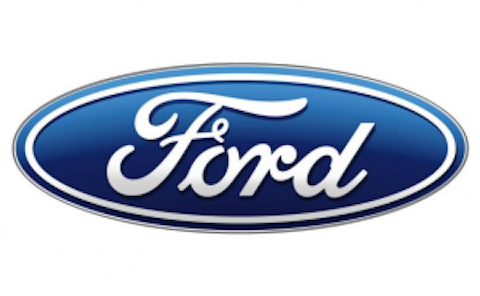There’s a lot of people out there that understand Ford Motor Company (NYSE:F)‘s debt issues accurately. However, there still remain some misconceptions about the present debt levels, and ignorance about future issues. Much of the debt that shows up on the financial statements is actually great for Ford. Yet, there are also issues that don’t show up that need to be aired out. I’ll show you everything you need to know to be a more knowledgeable investor, and we’ll do it in three simple steps: the past, present, and future of Ford’s debt.

It started two years before the great recession, when Alan Mulally was named CEO of Ford. One of the first things he accomplished was receiving a large loan to assist the troubled automaker with capital needed to turn the company around. Mulally described it as “a cushion to protect for a recession or other unexpected event.” It wasn’t easy to secure the $23.4 billion dollar loan, as Ford had to put up its heritage, its prized Blue Oval logo as collateral. If you’re keeping score, that makes it: Mulally/Ford 1; rest of Detroit 0. Having this cushion gave Ford the maneuverability to avoid the government bailout. That said, $23 billion is no small amount of debt to have on the financials.
Last year Ford wiped the last of the pre-recession loan and was rewarded by receiving investment grade once again. This is where some of the misconceptions begin. People hear the large 2006 loan is paid off, yet still see around $90 billion in total debt. Let’s take a quick look at the ratios of how that compares, and explain why it doesn’t matter, and that Ford’s high debt level is actually good for investors.
Present
- Debt to equity ratio tells us what portion of the debt, as opposed to equity, a company uses to help fund its assets.
- Current ratio tells us what proportion of a company’s short-term assets is available to finance its short-term liabilities.
| Company | Debt to Equity | Current Ratio |
|---|---|---|
| Ford | 3.82 | 1.76 |
| General Motors Company (NYSE:GM) | 0.33 | 1.25 |
| Toyota Motor Corporation (NYSE:TM) | 0.55 | 1.06 |
| Honda Motor Co Ltd (NYSE:HMC) | 0.49 | 1.29 |
Source: Morningstar
You can see why the misconceptions start, as the numbers for Ford are clearly higher in both ratios. Some investors simply don’t have the time to dig deeper and ask the right questions, which is why the Fool is here, to help you invest better. If you’re asking why there’s still almost four times the debt of the 2006 loan, it’s because the bulk of that $90 billion is under its finance division; approximately $71.9 billion as of 2011.
In life there is good debt, and bad debt. Student loans are considered good debt because, in theory, your future return of a higher salary will pay off more than your original investment. It’s no different for the bulk of Ford’s debt, they receive all those billions of dollars and then loan them out through its financial division at a higher interest rate, making a fair profit. The revenue brought in the the financial division was over $7 billion for 2012, and at a pre-tax profit of $1.7 billion. That’s a sizable chunk of profit, thereby making the vast majority of Ford’s debt “good” debt. Automotive debt, which is more of a “bad” debt, only accounts for roughly $13 billion. Overall, the Ford debt picture isn’t as bad as misconceptions portray it. That fact, combined with Ford’s management diligently paying down its debt, should leave investors little to worry about regarding automotive debt. However, there is an often overlooked issue that remains of concern — underfunded pension.
Future
The future debt problem doesn’t reside as much with automotive debt, as it does with its underfunded pension. Ford has tackled the problem over the past couple years, including a buyout offer for its pensioners and paying $3.4 billion into the fund in 2012. Even so, Ford said its pensions are still underfunded by $18.7 billion, much larger than its automotive debt. This doesn’t show up on balance sheets, and is often forgotten, but it could be a huge issue in the future. In 2013, Ford pledges to pay $5 billion into its pension fund with cash that could be used for dividend payments or further payments on automotive debt. If the underfunded amount continues to grow much larger than automotive debt, it should concern investors.
Bottom line
One event that makes me feel that the debt picture isn’t an issue, is the recently doubled dividend. I trust that if Ford’s management, who has made good decisions since Mulally’s arrival, doubled the dividend, the underfunded pension is under control. Management’s confidence may stem from the record-low discount rates, making it less of an issue as long as the economy and markets continue to grow. One thing is clear: Some misconceptions of Ford’s debt aren’t realistic. With a company turnaround completed, the economy gaining momentum, and an improving balance sheet, the future is still bright for Ford.
The article Do You Understand Ford’s Debt? Because You’d Better originally appeared on Fool.com and is written by Daniel Miller.
Fool contributor Daniel Miller owns shares of Ford. Follow Daniel on Twitter. The Motley Fool recommends Ford and General Motors. The Motley Fool owns shares of Ford.
Copyright © 1995 – 2013 The Motley Fool, LLC. All rights reserved. The Motley Fool has a disclosure policy.



